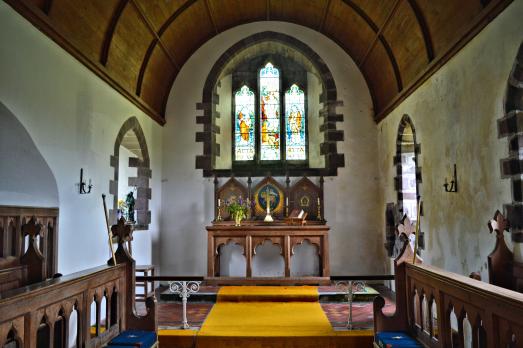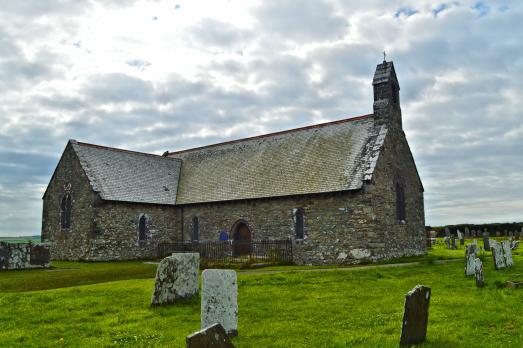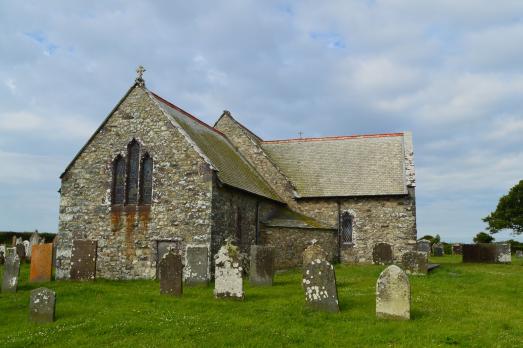High on it's vantage point, the church of St David on the Pilgrim Way from Haverfordwest to St Davids, has long been a resting place for travellers. It inspired the bilingual names of the hamlet, Tregroes (Place of the Cross) and Whitchurch. It was the centre for the large rural parish until the boom years of sea trading brought about the growth of Solva.
The church is within walking distance of the coastal path, harbour and shops of Solva, the Woollen Mill in Middle MIll, Caerfarchell Pottery and the WW II airfield, base for RAF Coastal Command, which is now a National Parks Nature Reserve. All feature on the Solva Heritage Trail.
The chancel and nave are pre 14th century. First recorded in the “Taxatio” of 1291, it belonged to the Cistercian Order and was known as Cappella Alba Monetserii. The late 14th early 15th century saw the addition of the chancel arch and piscena, north transept and skew-passage (squint) the window. Extensive restoration between 1872 and 1874 used Caerbwdy stone to dress the added and enlarged window openings and the bellcote was built. A plaque in the transept records the donation of a £40 grant for the provision of seating so that all might sit for services.
Adam Houghton, Bishop of St Davids, and one time ambassador to the Court of France and Lord High Chancellor of England, was born in Caerforiog of this parish in 1389. Henry Whiteside (died 1826), designer of the first Smalls lighthouse (1770) is buried in a table tomb in the churchyard with members of his family nearby.
As the trade and population of Solva grew, the National School Room in Solva was licensed as a place of worship by the Lord Bishop of St Davids in the month of February 1841: ‘Circumstances of License: On account of the inconvenient distance of the Parish Church of Whitchurch from the village of Solva, where the mass of the population resides'. Eventually, of course, in 1879, a church was built in Solva.





